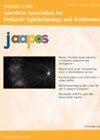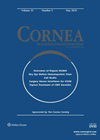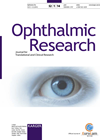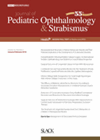You searched for "Refraction"
Comparison of visual field indices between normal adults and children
The authors present a prospective observational study which aimed to compare visual field indices with retinal nerve fibre layer (RNFL) thickness using optical coherence tomography (OCT) in normal adults and children. Children aged 6–18 years were recruited from a single...Toxic nutritional optic neuropathy (TON)
2 August 2022
| Ali Yagan
|
EYE - General
Toxic optic neuropathy are a group of conditions manifested by reduction of visual functions secondary to damage to the anterior visual pathways from exposure to a toxin. The implicated toxin could be work-based, food or drink related, or iatrogenic medication....
The screening and treatment of retinopathy of prematurity
1 December 2013
| B Manoj, F Dean
|
EYE - Paediatrics, EYE - Strabismus, EYE - Vitreo-Retinal, EYE - General
A male child is born at 31 weeks and requires 100% oxygen supplementation with intensive care. What would be the ophthalmic management of this child? In the first instance, it will be useful to know the screening criteria and protocol....
My top five: Emerging alternatives to manage and treat nAMD
3 April 2024
| Nikhil Sharma, Paras Agarwal
|
EYE - Vitreo-Retinal
Wet (exudative or neovascular) age-related macular degeneration (AMD) is characterised by choroidal neovascularisation, in which new blood vessels from the choroid invade through Bruch’s membrane. These blood vessels proliferate beneath or through the retinal pigment epithelium (RPE), causing patients to...
My Top Five: Emerging alternatives to manage and treat nAMD
3 April 2024
| Nikhil Sharma, Paras Agarwal
|
EYE - General
Wet (exudative or neovascular) age-related macular degeneration (AMD) is characterised by choroidal neovascularisation, in which new blood vessels from the choroid invade through Bruch’s membrane. These blood vessels proliferate beneath or through the retinal pigment epithelium (RPE), causing patients to...
Acanthamoeba ability to adhere to different contact lenses
This study tested ability of Acanthamoeba lugdunensis trophozoites to adhere to silicon hydrogel contact lenses (SHCL) and how this is influenced by different multipurpose contact lens solutions (MPS). Three generations of SHCL were tested: first generation – Air Optix, second...Effect of preservative free fluoroquinolones on human corneal epithelial cells in vitro
Fluoroquinolones, including second generation (ofloxacin and ciprofloxacin), third generation (levofloxacin and tosufloxacin) and fourth generation (gatifloxacin and moxifloxacin), are a group of bactericidal agents used to treat multiple ocular infections. The third and fourth generation fluoroquinolones have enhanced Gram-positive activity...Amblyopia prediction using Plusoptix
The aims of this study were to evaluate Plusoptix performance in amblyopia prediction, to examine the best readings for that prediction and to determine if it is sufficient to have one measure or more. Data were collected in a two-year...Canon Medical announces Sense Medical as new UK distributor
25 January 2023
|
Contracts & Distributors
Canon Medical Systems Europe today announced that it has signed an agreement with Sense Medical to be the official exclusive distributor of their ophthalmic eye care products within the United Kingdom and Ireland.
Tumour characteristics influencing visual field outcomes
2 August 2024
| Lauren R Hepworth
|
EYE - Neuro-ophthalmology
This retrospective study aimed to explore correlations between pituitary tumour characteristics which influenced visual field changes. Cases of transsphenoidal surgery from a six-year period resulting in a pathologic diagnosis of pituitary adenoma from a single centre were identified. Individuals were...
Fight for Sight to maximise impact by funding solutions-focused research in priority eye conditions
1 August 2018
| Rod McNeil
|
EYE - General
Fight for Sight aims to stop sight loss by funding pioneering research. Rod McNeil takes a look at the Primer Fellowship Awards programme, which provides funding for up to £60,000 for individuals to undertake vision-related research for one year. Among...
The assessment of pupils and pupillary reactions
1 October 2015
| Li Yen Goh
|
EYE - Vitreo-Retinal
Understanding pupillary reactions is vital in understanding basic neuro-opthalmology. It is a skill required in eye casualty, clinics and perhaps most importantly, exams. To start at the beginning, the pupil is the central aperture of the iris, its size controlling...








